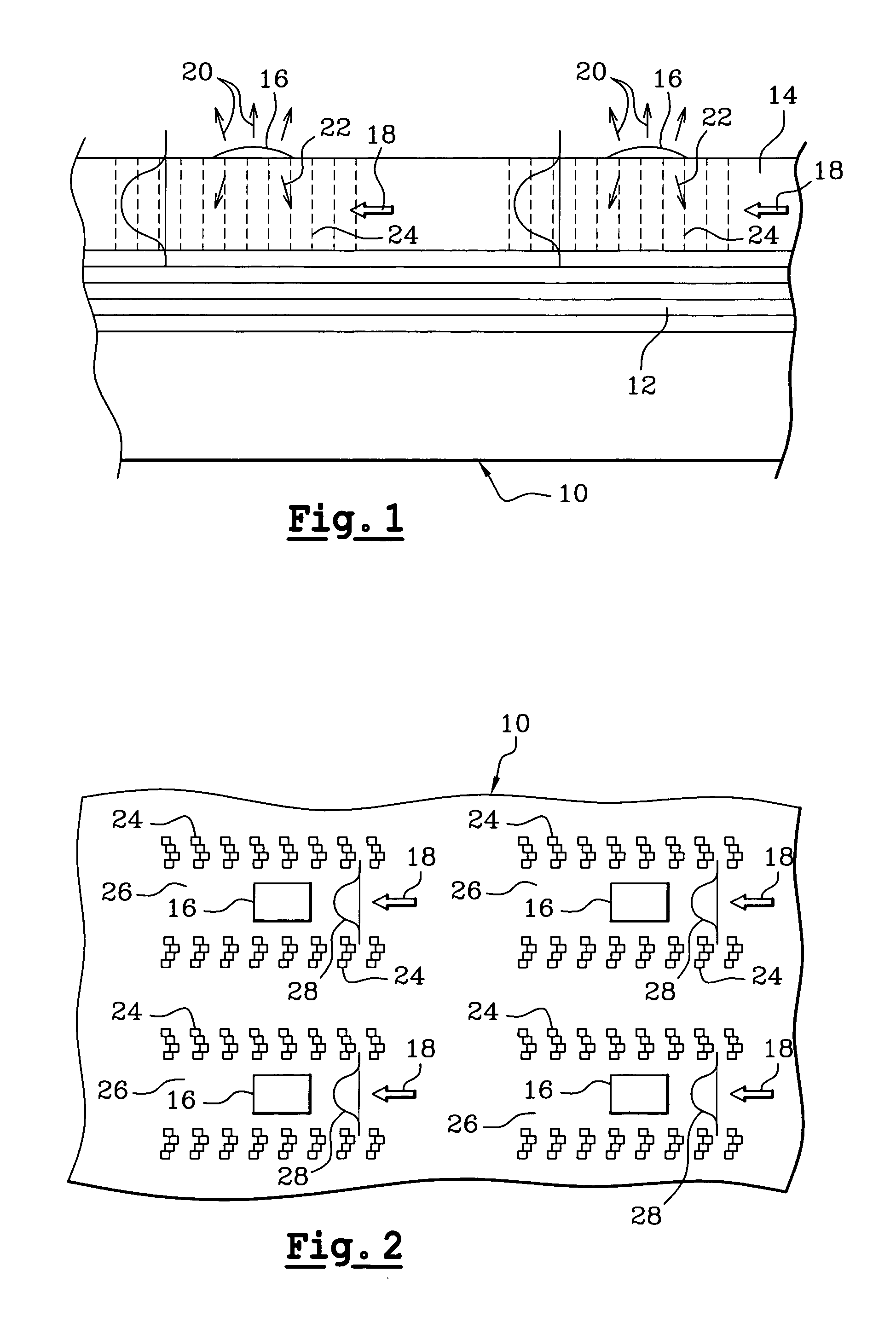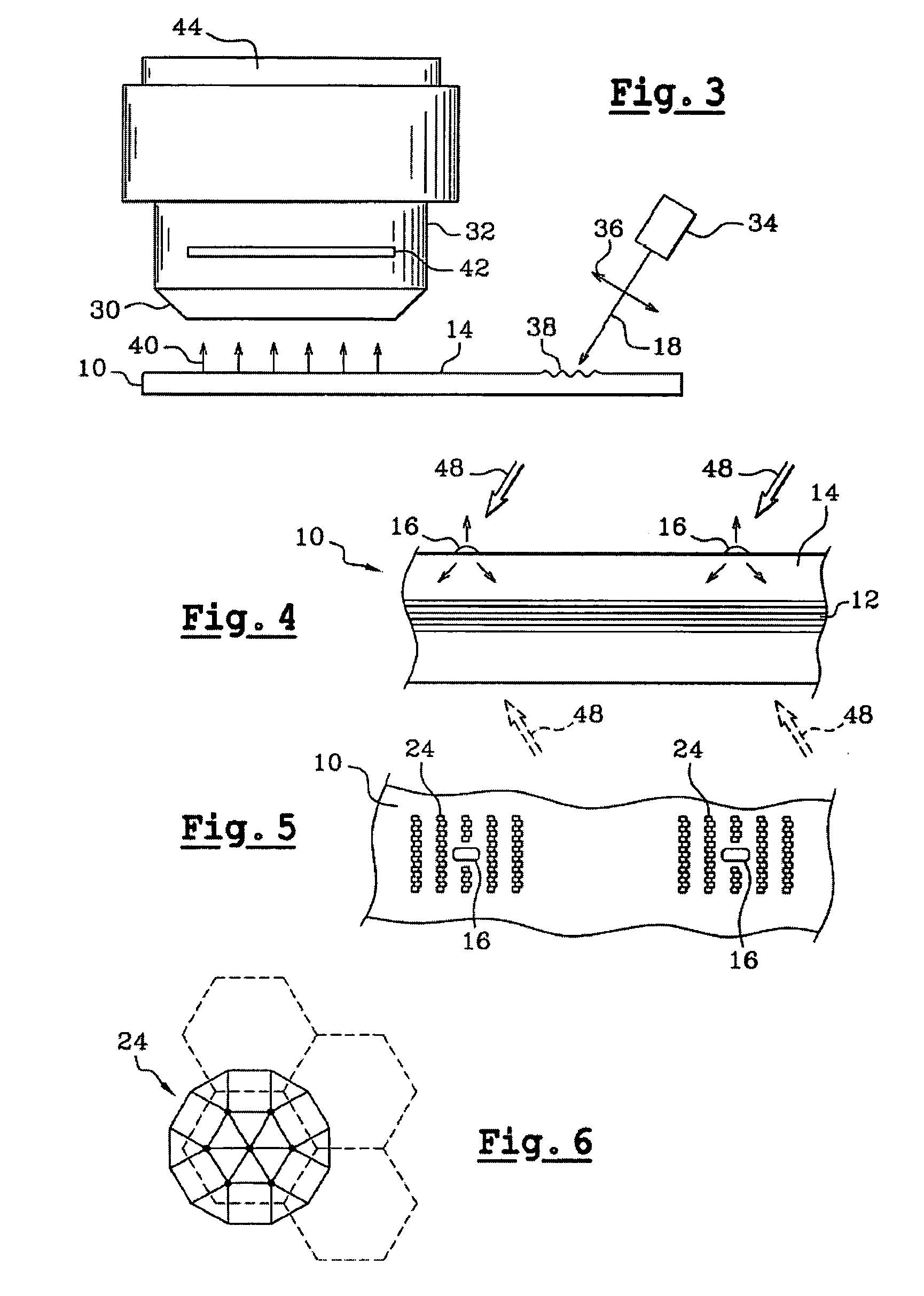Biochip type device
a biochip and chip technology, applied in the direction of fluorescence/phosphorescence, instruments, material analysis, etc., can solve the problems of poor energy efficiency and cost, difficult to locate with sufficient accuracy, poor energy efficiency, etc., and achieve the effect of increasing measurement sensitivity
- Summary
- Abstract
- Description
- Claims
- Application Information
AI Technical Summary
Benefits of technology
Problems solved by technology
Method used
Image
Examples
Embodiment Construction
[0029]In the embodiment of FIGS. 1 and 2, reference 10 designates a substrate of any suitable material, e.g. glass, silica, metal, semiconductor material, or oxide, the substrate including an intermediate non-absorbent multilayer mirror 12 made up of a plurality of dielectric or metallic layers covered in a layer 14 of material having a relatively high refractive index, i.e. in this case a material whose refractive index is greater than or equal to 1.6. For example, the material may be TiO2 which has a refractive index equal to 2.4.
[0030]Chromophore elements 16 are fixed to the top face of the layer 14.
[0031]As mentioned above, these chromophore elements may be formed by probes fixed on the top face of the layer 14, or by molecules for analysis that become coupled with the probes that match them.
[0032]These probes constitute an array on the surface of the layer 14 and they are located in known positions.
[0033]Typically, the chromophore elements 16 are on squares of a side lying in t...
PUM
 Login to View More
Login to View More Abstract
Description
Claims
Application Information
 Login to View More
Login to View More - R&D
- Intellectual Property
- Life Sciences
- Materials
- Tech Scout
- Unparalleled Data Quality
- Higher Quality Content
- 60% Fewer Hallucinations
Browse by: Latest US Patents, China's latest patents, Technical Efficacy Thesaurus, Application Domain, Technology Topic, Popular Technical Reports.
© 2025 PatSnap. All rights reserved.Legal|Privacy policy|Modern Slavery Act Transparency Statement|Sitemap|About US| Contact US: help@patsnap.com



